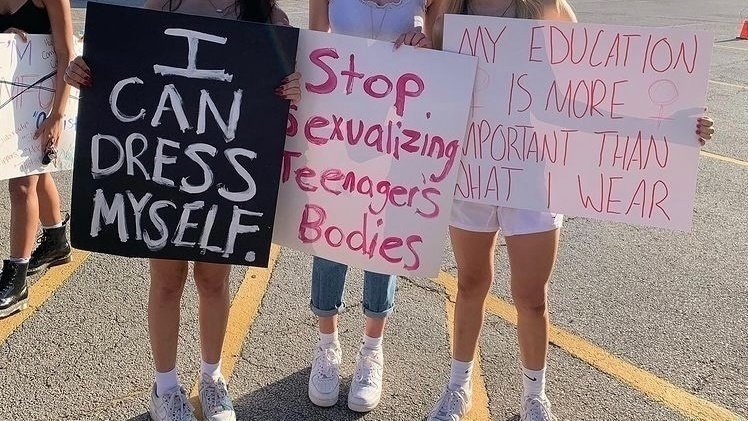When it comes to dress codes, many schools make it a big deal. Does the necessity of having a dress code truly promote a positive learning environment? Or are schools just overdoing this whole situation? A school’s main focus should be on our education rather than policing what students decide to wear.
Female Targeting
Although schools claim dress codes apply to everyone, the harshest rules are mainly targeting females. They claim that how girls choose to dress “distracts” males and is “inappropriate.” Not only is this wrong, but it also sends a message to these girls that the way they decide to dress is responsible for boys’ inappropriate behavior. It’s always schools saying “if it’s longer than your fingertips” or “no skin showing” as their excuse for this being one-sided and very sexist towards female students. Apart from girls being “distracting” in the classroom, unfair dress codes affect education. When girls have to be sent to the office, home, or detention, it causes those students to be behind on their schoolwork. This isn’t only seen in classrooms either. In New York, a group of female athletes were asked to leave practice for only wearing a sports bra, yet the male athletes could practice shirtless. School dress codes also create an environment where women are learning early to feel ashamed of their bodies.
Religious Beliefs
Freedom of religious expression is acceptable in any form, but for “school safety,” they don’t follow up with that. Students are not being able to express themselves and who they are. A girl named Nashala Hearn was suspended twice for wearing her hijab months after she had been wearing it to school without a problem, which makes no sense. The school said that it was not appropriate due to the dress code policy. They mentioned how it was part of their “no hats“ policy. The school made Hearn choose between following her religious principles or her education, which is unacceptable. There are schools that have suspended and punished students for wearing rosary beads, hijabs, pentagrams, and yarmulkes. This most definitely violates students’ freedom of expression.
People of Color
People of color also play a large part in dress code “violations” and are targeted. There have been school administrators who tried to ban students of color from certain hairstyles and accessories that represent and reflect their cultural heritage. For example, dreadlocks and afros are seen as big problems in some schools due to how “extreme” they are. The same thing goes with box braids, usually if they are brightly colored. This is only part of the issue with schools marginalizing African-American students. In 2020, two black girls in Houston, Texas were suspended over their “inappropriate“ hairstyle. There is a pattern of unfair discrimination shown in school policy dress codes. This has to come to an end.
What Can We Do?
This issue is still sadly occurring and nothing has been done about it. Here at Forest Grove High School, they do a good job on this topic and for the most part, just worry and care about our education rather than how we choose to dress and be ourselves. What we can do to try and make this issue come to a stop is by beginning conversations with school administrators on how we feel about it. We can argue the way it’s unequal and unnecessary. We can organize petitions and protests too! Gathering support from students in schools that are against this can also be a good way to help end this oppression. We just have to fight back to be able to express ourselves and know our rights to slowly but surely get this issue resolved.








































































































































Zachary Savage • Oct 16, 2023 at 12:28 pm
I enjoy the way you reveal the issues you brought up.
Alise • Sep 29, 2023 at 12:35 pm
I loved the way you addressed the issue and I agree with everything you wrote.